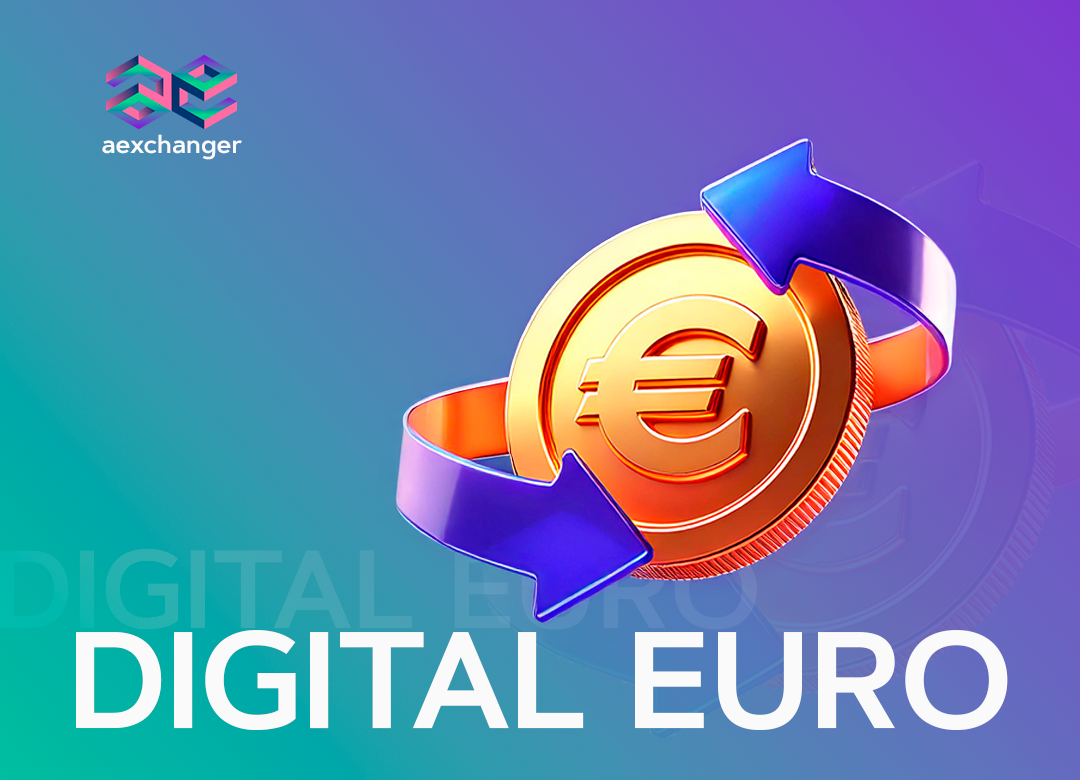2024-05-06 10:33:32
What Is the Digital Euro, and Are Europeans Ready for CBDC?

Is Cryptocurrency the Future of Payments?
Talks about digital money are getting louder and louder. Some people are looking forward to it, hoping that payments will become faster and more affordable, while others are wary, worried that transactions will be tracked.
When will the digital euro appear in Europe? What will change after that, and are locals ready for the new form of currency? Let’s find out!
Digital Euro Is a New Form of Cash
The ECB’s 2022 survey showed that Europeans used cash for 59% of transactions at retail outlets. In 2019, this figure was 72%, and in 2016 — 79%. Card payments were used in 34% of POS transactions, compared to 25% in 2019 and 19% in 2016.
Having noticed that people increasingly prefer electronic payments, the ECB began to explore opportunities for the development of the euro currency. The results showed that the introduction of CBDC could be the best solution.
CBDCs (Central Bank Digital Currency) are digital currencies issued and regulated by the central banks of different countries. In other words, CBDCs are government money, and their value corresponds to the exchange rate of national currencies in a 1:1 ratio, which guarantees stability. Although CBDCs are based on the blockchain, they are not considered cryptocurrencies.
According to the European Central Bank (ECB) website, the digital euro is an electronic means of payment that will be available free of charge to all residents of the eurozone after the official launch. It will serve as an alternative to euro banknotes and coins but will not replace them.
It is expected that the digital euro will add inclusiveness to Europe’s monetary system, support its monetary sovereignty, and strengthen its competitiveness in the global financial arena.
How Will CBDC Work, and Will It Be Possible to Maintain Anonymity?
Imagine going to an ATM and withdrawing 100 euros from your bank card. Your account balance decreased by 100 euros, but now, you have 100 euros in cash to make payments.
The same process will apply to CBDC, with the only difference being that the money will not be converted to cash but to digital euros.
How to start using CBDC? You need to take the following steps:
1. Set up a digital wallet by contacting your bank or an authorized government agency, such as a post office, for help.
2. Deposit money to the wallet through a connected bank account or make a cash deposit.
The ECB plans to introduce limits for CBDC accounts.
They have not yet been finalized, but the bank’s announcement says that the amount may be 3,000-4,000 euros. As soon as citizens want to put more money in the “vault,” the amount will flow to existing bank accounts. Such measures will help prevent a massive outflow of money from banks to CBDC accounts.
“With the digital euro, people will be able to pay in ‘public money.’ Uniquely, they will be able to pay both online and offline,” explains Valdis Dombrovskis, Executive Vice President of the European Commission.
CBDCs will be used to pay for purchases, receiving salaries and social payments, making international transfers, etc. Payments can be made from device to device, for example, from a remote location or underground parking lot. It will be safe, secure, fast, and convenient.
As for anonymity, the ECB notes that it will be preserved for small payment levels. Transactions for large amounts cannot remain anonymous. The exact amounts have not yet been determined.
When Will the Digital Euro Be Introduced?
On November 1, 2023, the ECB launched a two-year “preparatory phase” for the introduction of the digital euro. During this period, it is planned to finalize the process of creating rules and select partners in the private sector. The full launch of the digital euro is planned for 2027, but the final decision has not yet been made.
How Do Europeans View CBDC?
Some European citizens do not yet understand how CBDC transactions will be fundamentally better than payments by bank card or using Apple Pay or Google Pay. Others are waiting for the introduction of the digital euro and believe that the new form of money will greatly simplify transactions, especially international transfers. In general, the digital euro is desirable for Europeans because of its many advantages. The main requirement that remains for the ECB is to ensure privacy and freedom rights after the introduction of CBDC. It will be the decisive factor in whether people will switch to digital money or not.






 You can share
You can share

